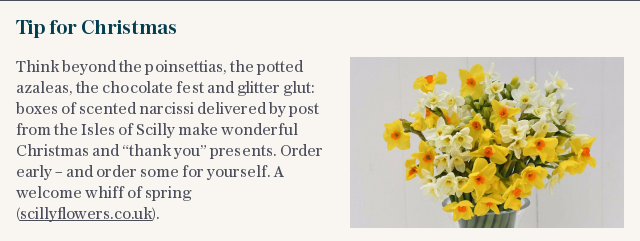Helen Yemm: nerines and amaryllis confusion, jasmine outdoors, strelitzia in flower

NERINES, CRINUM AND HARDY AMARYLLIS
Garth Inmanhas several well-established clumps of Nerine bowdenii in his garden, expanding year by year and flowering well despite less than full sun at the foot of the east-facing wall of his house.
He must move them because of building works scheduled to start in April-May next year, and wants to know when and how he should do this – should he move whole clumps or take the opportunity to split them?
Nerines are best moved in the spring, so Garth has plenty of time to scout around looking for a new home for them. As he suspects, nerines are sulky beasts if disturbed, and enjoy the congestion they bring upon themselves.
If I were Garth I would keep the clumps more or less intact, or split them in half for ease of management (in which case casualties will occur) but he would do best not to separate them out into individual bulbs or it could be years before they recover. If he can find another wall site for them, the sunnier the better, and give them an under-sprinkling of bonemeal when he replants them, both will be appreciated. And he should aim to keep the tops of the bulbs at, or slightly above, soil level.
Jenny Taylor sent pictures of her superficially similar pink trumpet-shaped lilies that rise out of the ground in late summer on naked stems more than 3ft (1m) tall (earlier and much taller than nerines) followed by leaves that fade away by the following summer.
Could this be a miraculous appearance of a Crinum x powellii that failed her some years ago? No, I think not. These are Amaryllis belladonna. Crinum bears slightly spikier trumpets, flowers earlier in summer and is usually evergreen.
Confused about their identity, Jenny has dug up her bulbs and put them in pots. I suggest it is not too late to put them back – they will do better in the ground. Unlike nerines, they like to have their noses just below ground.

OUTDOOR MISBEHAVIOUR
An indoor potted jasmine that I planted outside in the garden when it outgrew its pot has grown rampantly, but produces lots of buds in the autumn that never open. I have tried everything – even cutting the flower buds off in the hope that it would produce more later. What can I do to make it flower at the right time? Corinne Thayer – via email
I remember being overwhelmed one balmy February by the scent of an indoor jasmine that had been planted out. It was cowering in the shelter of assorted drainpipery in a London basement.
Usually this early-spring jasmine (Jasminum polyanthum – a different thing entirely from the hardy summer-flowering Jasminum officinale) behaves much as yours does, merely surviving a British winter, producing buds that fade.
The RHS lists its hardiness as H2, which means it tolerates low, but not freezing, temperatures. Your jasmine is trying its best, but isn’t quite making it: snipping off the buds will not persuade it to try again later.
You could cut your losses and replace it with J. officinale, or even the evergreen, similarly scented Trachelospermum jasminoides. Or grow one in a pot as before, in a cool room indoors. Cut it hard back after flowering and stand it outside for the summer to make a new tangle of growth and buds. From August, give it high potash tomato food, then bring it indoors again in November.
STRELITZIA SUCCESS
I have a large strelitzia in a pot that lives outside in the summer. After 13 years it has produced three flower spikes and is about to bloom. Being much too large to bring into the house it is now in my unheated but sunny conservatory. Do you think it will flower successfully? Jane Barrington – via email
The wait is over – how exciting. This South African native tolerates short spells at low temperatures, so fingers crossed. Could you put a heater temporarily in the conservatory if we have a prolonged really cold snap?
I have learnt about Strelitzia reginae (bird of paradise) the hard way, having inherited a mighty plant propagated from seed in the Sixties by my late mother. It lived in a large container that sat for eight months of the year outside her music room. By the time I got custody it was at death’s door, having been abandoned outside for the whole of a wet winter. I quickly found out that, apart from winter shelter, strelitzia needs a summer holiday outside to enable it to flower the following winter.
Mine has lots of enormous handsome leaves, but it completely stopped flowering when I had to put it in a pot that was so large and heavy that I could no longer lift it outside from my rather shady conservatory.


